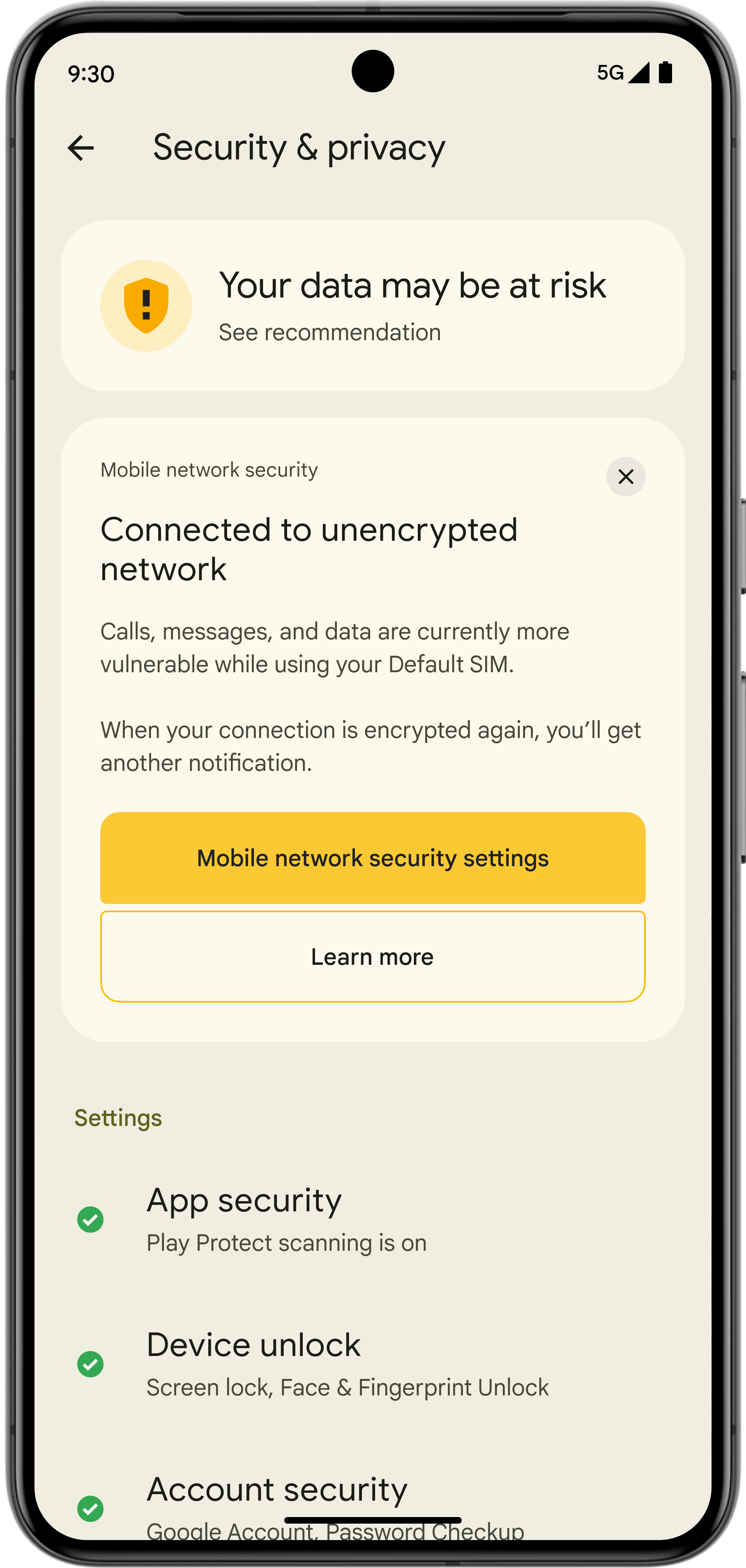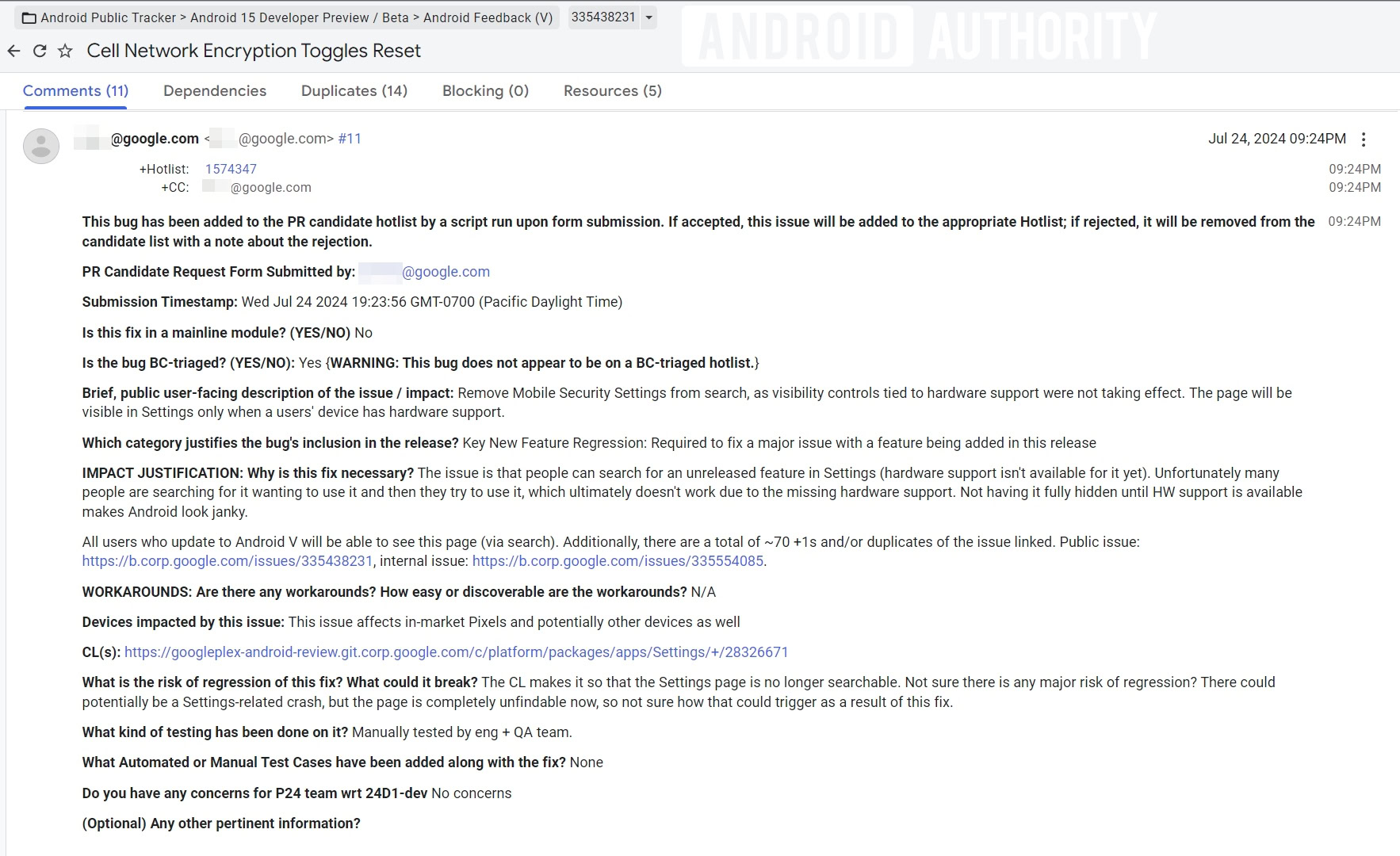Affiliate links on Android Authority may earn us a commission. Learn more.
Android 15's new cellular security features are missing on Pixel phones: Here's why
October 15, 2024

- Android’s new mobile network security features aren’t available in the stable Android 15 update that recently rolled out for Pixel phones.
- The settings page for these features was added in Android 15 Beta 1, but it was removed in the final beta.
- Google hid the settings page for mobile network security because “hardware support isn’t available for it yet” on current Pixel phones.
Google finally rolled out the stable Android 15 update to Pixel devices today, delivering many new features like Private Space, app archiving, predictive back animations, and more. However, the stable update doesn’t include some of the features we spotted during the Android 15 beta program, such as the entry point for the Device Diagnostics app in Settings, as well as the new cellular security features that Google announced at I/O. Here’s why the Android 15 update doesn’t feature these new cellular security capabilities.
For a bit of context, the first beta of Android 15 introduced a new settings page called “cellular network security” under Settings > Security & privacy > More security & privacy. This page was later renamed to “mobile network security” in a later beta, which also added a description that stated “these settings help protect your calls, messages, and data from outdated or unencrypted networks that could expose you to data theft or surveillance.”
On the mobile network security page, there were two toggles: “network notifications” and “allow only encrypted networks.” The “network notifications” feature lets you “get notified when your device connects to an unencrypted network, or when a network records your unique device or SIM ID.” The “allow only encrypted networks” setting improves the security of your mobile network connections at the cost of limiting your network options in some locations, but emergency calls should still go through.
As Google explained at I/O, these cellular security features were aimed at “defend[ing] against abuse by criminals using cell site simulators to snoop on users or send them SMS-based fraud messages.” The technical terms for these Android 15 features were Cellular Cipher Transparency and Identifier Disclosure Transparency, and they’re designed to protect you from rogue “stingray” tracking devices.

While it’s true that these features are part of Android 15’s source code, they’re not available by default because they “require device OEM integration and compatible hardware,” according to Google. Given that these features appeared available to Pixel users during the Android 15 beta, though, it would seem reasonable to assume that Pixel phones support them. That’s not actually the case, as it turns out, as the visibility of the “mobile network security” settings page on Pixel phones was just a mistake.
It turns out that none of the current crop of Pixel phones — not even the four phones in the Google Pixel 9 series — currently support Android 15’s new cellular security features. Google actually went ahead and hid the “mobile network security” settings page from Pixel users in Android 15 Beta 4 and then prevented it from appearing in searches in Android 15 Beta 4.2, according to an Issue Tracker post. In a now-deleted comment on that same Issue Tracker post, a Googler explicitly stated that the visibility of Android 15’s mobile network security settings is tied to hardware support.

That comment was made before the launch of the Pixel 9 series, leaving the possibility that maybe Google’s latest devices support the feature. However, I confirmed today that the page doesn’t appear on even the Pixel 9 Pro after updating it to Android 15. It’s possible that will change in a future release, though, as Google’s mention of hardware support may refer to radio driver/HAL support that it could implement with the help of its modem provider (Samsung).
Google at I/O said that it was “working with the Android ecosystem to bring these features to users” and that it “expect[s] OEM adoption to progress over the next couple of years,” so hopefully these new cellular security features will actually make their way to some Android devices in the near future.
Thank you for being part of our community. Read our Comment Policy before posting.